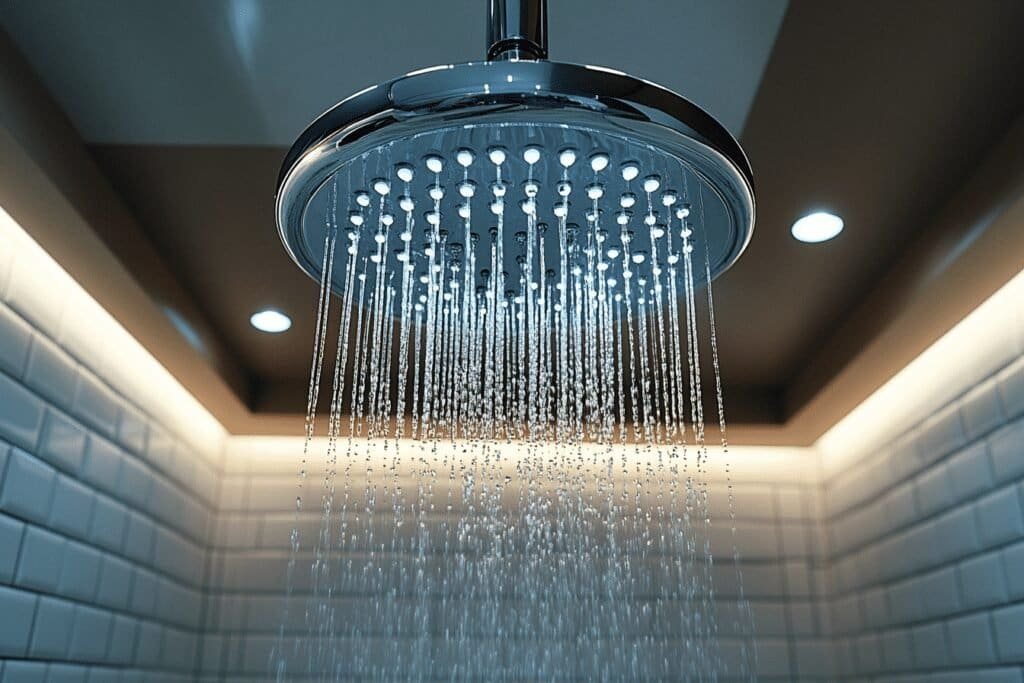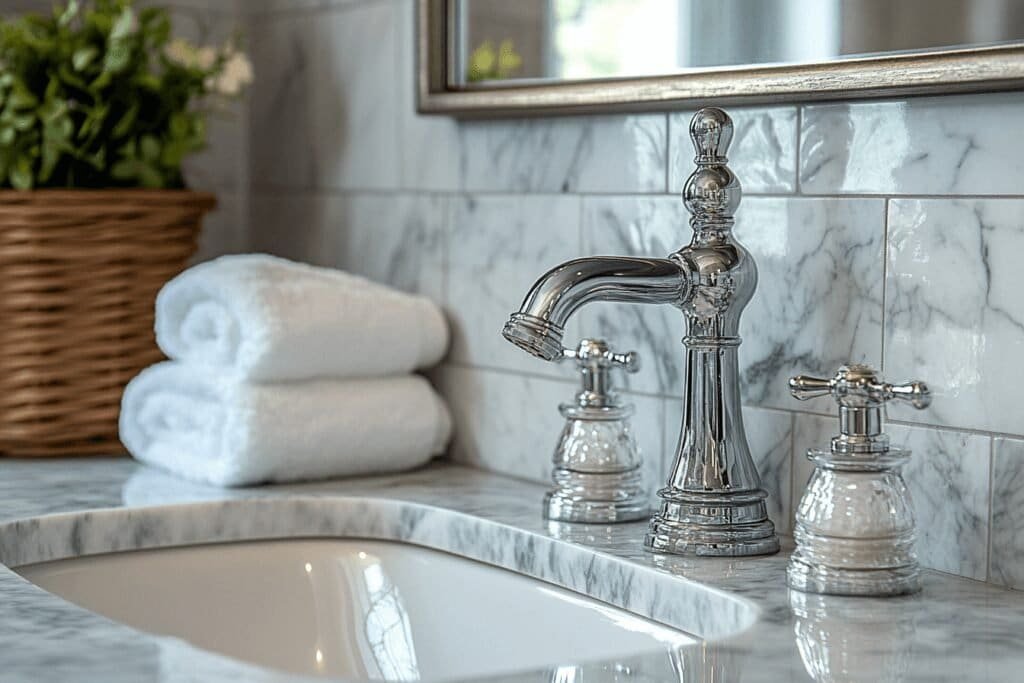A dripping shower head can be more than just an annoyance—it can lead to wasted water, higher bills, and even potential damage to your bathroom. So, why does my shower head drip? Whether it’s due to worn-out parts, mineral build-up, or high water pressure, understanding the cause is the first step to fixing it. In this guide, we’ll explore common reasons behind a dripping shower head and provide simple solutions to stop the leak, helping you maintain a functional and beautiful bathroom.
In this article, we’ll explore why your shower head drips, common causes, and how you can quickly fix the issue without needing to call a plumber. We’ll also touch on the impact a dripping shower head can have on your bathroom, especially if you’re considering a bathroom remodel or installing a walk-in shower.
Let’s dive into the reasons your shower head might be dripping and the simple fixes to stop it for good.
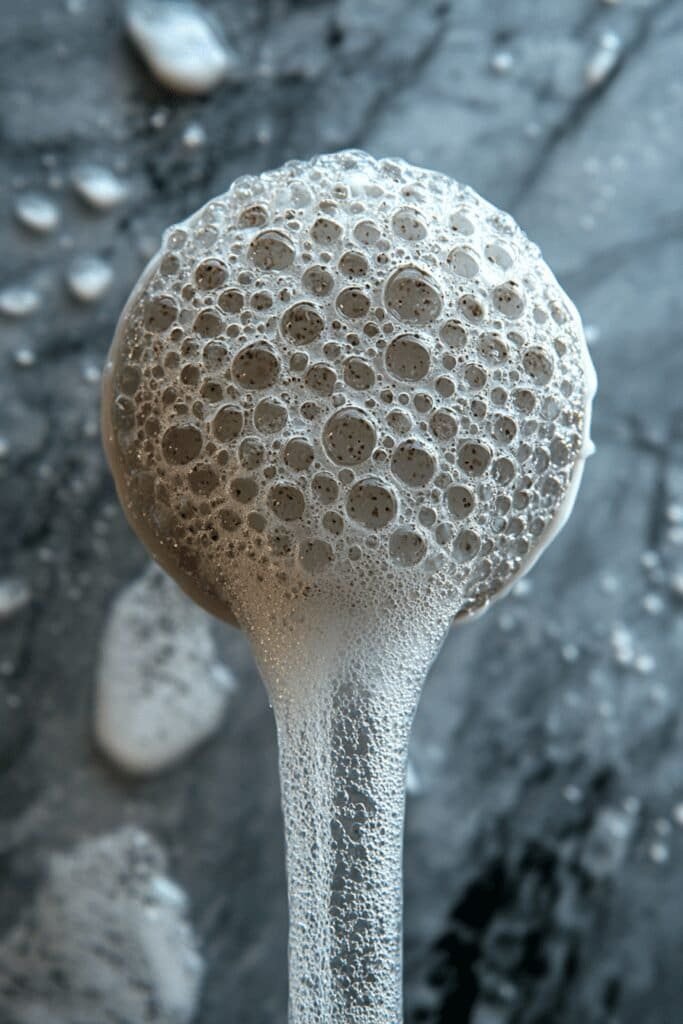

1. Common Causes of a Dripping Shower Head
There are several reasons why your shower head could be dripping. The cause could be as simple as a worn-out washer or something more involved, like a problem with your home’s water pressure. Here are the most common culprits:
1.1. Worn-Out Washer or O-Ring
The most common cause of a dripping shower head is a worn-out washer or O-ring. These small rubber components are located inside the shower faucet or valve and act as a seal. Over time, with constant use and exposure to water, they can become brittle or cracked, leading to leaks.
Quick Fix: Replacing the washer or O-ring is a simple fix that most homeowners can handle themselves. All you need is a wrench, some plumber’s tape, and a replacement washer or O-ring (available at any hardware store). First, turn off the water supply to the shower, then unscrew the shower head, remove the worn washer or O-ring, and replace it with a new one.
1.2. Mineral Build-Up in the Shower Head
If you live in an area with hard water, mineral deposits can accumulate inside the shower head. This build-up can block water flow, causing water to drip out even after you turn the shower off. Over time, these minerals—mostly calcium and magnesium—harden inside the shower head, impacting its functionality.
Quick Fix: You can clean the mineral deposits from your shower head by soaking it in a mixture of water and vinegar. To do this, remove the shower head and soak it in a bowl of white vinegar for several hours. If the shower head is difficult to remove, fill a plastic bag with vinegar, place it over the shower head, and secure it with a rubber band. This should help dissolve the minerals, allowing the water to flow properly and stopping the drip.
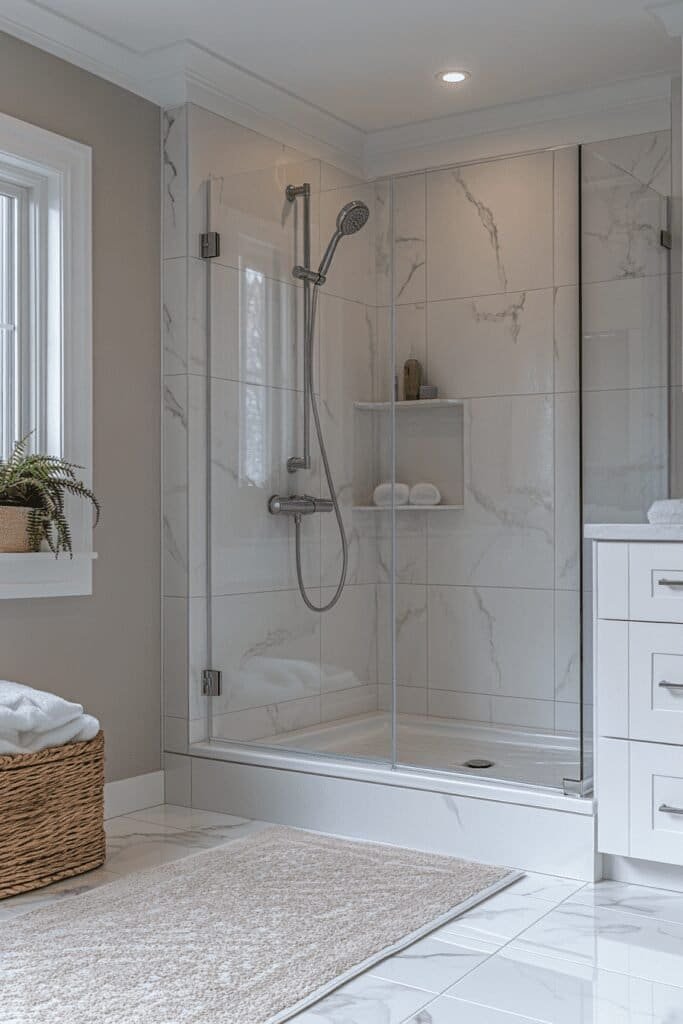

1.3. Faulty or Worn-Out Shower Valve
The valve that controls the water flow to your shower might be malfunctioning. If the valve doesn’t fully close, water can continue to seep through, causing that constant drip. Valves can wear out over time or become damaged due to debris or corrosion in the water line.
Quick Fix: In this case, you’ll likely need to replace or repair the valve. While some handy homeowners may feel comfortable tackling this task, it may be best to call a plumber if you’re unsure. Replacing a valve involves shutting off the water supply, removing part of the faucet, and sometimes replacing internal components.
1.4. High Water Pressure
High water pressure might sound like a good thing, but it can cause problems with your plumbing system. If your home’s water pressure is too high, it can force water through the shower head even after the faucet is turned off. This results in that annoying drip.
Quick Fix: To reduce the pressure, you can install a pressure-reducing valve or adjust the settings on an existing valve. If this is a recurring problem in your home, it’s worth getting a plumber to assess the overall water pressure and install a pressure regulator if needed.
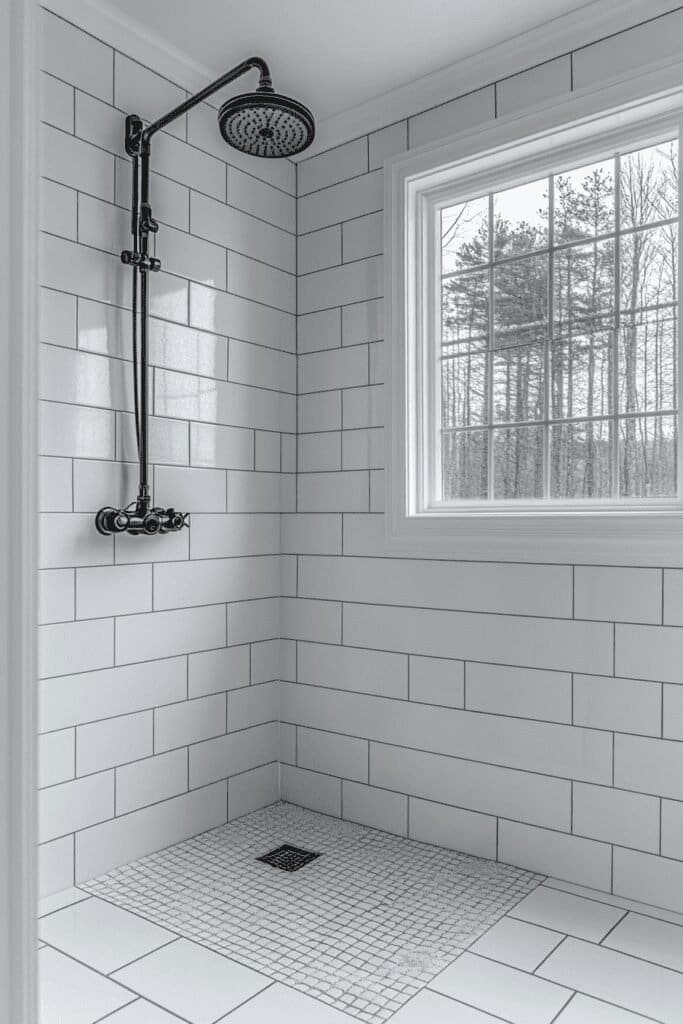

2. How a Dripping Shower Head Can Impact Your Bathroom
A dripping shower head is more than just a nuisance. Left unattended, it can cause several problems for your bathroom:
2.1. Wasted Water and Higher Bills
It may not seem like much, but a dripping shower head can waste up to 500 gallons of water per year depending on the severity of the leak. This wasted water translates to higher water bills over time, making a seemingly small issue a costly one.
“A single drip may not seem like much, but over time, that slow leak can waste hundreds of gallons of water—and, more importantly, money.”
2.2. Potential Water Damage
A constant drip can lead to moisture build-up around your shower, especially if you have a walk-in shower. Over time, this excess moisture can seep into the grout, tiles, and even walls, leading to water damage that may not be immediately noticeable. It could cause tiles to loosen, grout to crack, and lead to mold and mildew growth.
2.3. Mold and Mildew Growth
With extra moisture in the bathroom, mold and mildew are likely to develop. This can create an unhealthy environment and make your bathroom harder to clean. Fixing that dripping shower head as soon as possible can help prevent these issues from arising.
3. DIY Fixes for a Dripping Shower Head
Thankfully, fixing a dripping shower head doesn’t always require professional help. Here are a few DIY fixes you can try:
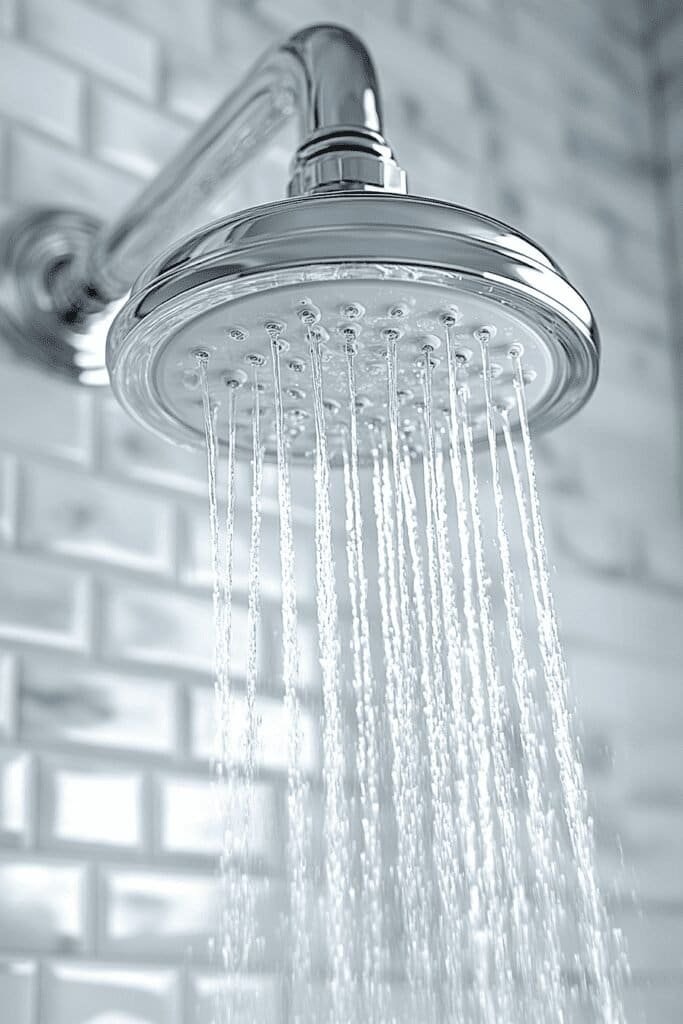

3.1. Replace the Washer or O-Ring
As mentioned earlier, this is often the quickest and easiest solution for a dripping shower head. Simply turn off the water, disassemble the shower head or faucet, and replace the worn-out washer or O-ring.
3.2. Clean the Shower Head
If mineral deposits are the culprit, soak the shower head in vinegar to dissolve the build-up. This will not only stop the drip but also improve the water flow from your shower.
3.3. Adjust or Replace the Valve
If the valve isn’t closing properly, replacing or adjusting it can resolve the issue. While this might require a bit more work, it’s a key fix to stop that persistent drip.
4. When to Call a Professional Plumber
Not all shower head drips are easy to fix, especially if the issue lies deeper in the plumbing system. Here are some scenarios where you might want to call in a professional:
- If you’ve tried the DIY fixes and the drip persists.
- If the leak seems to be coming from inside the wall, indicating a deeper issue with your plumbing.
- If you’re unsure how to safely replace valves or other internal parts.
A professional plumber can diagnose and fix the problem efficiently, ensuring your shower is in top condition.
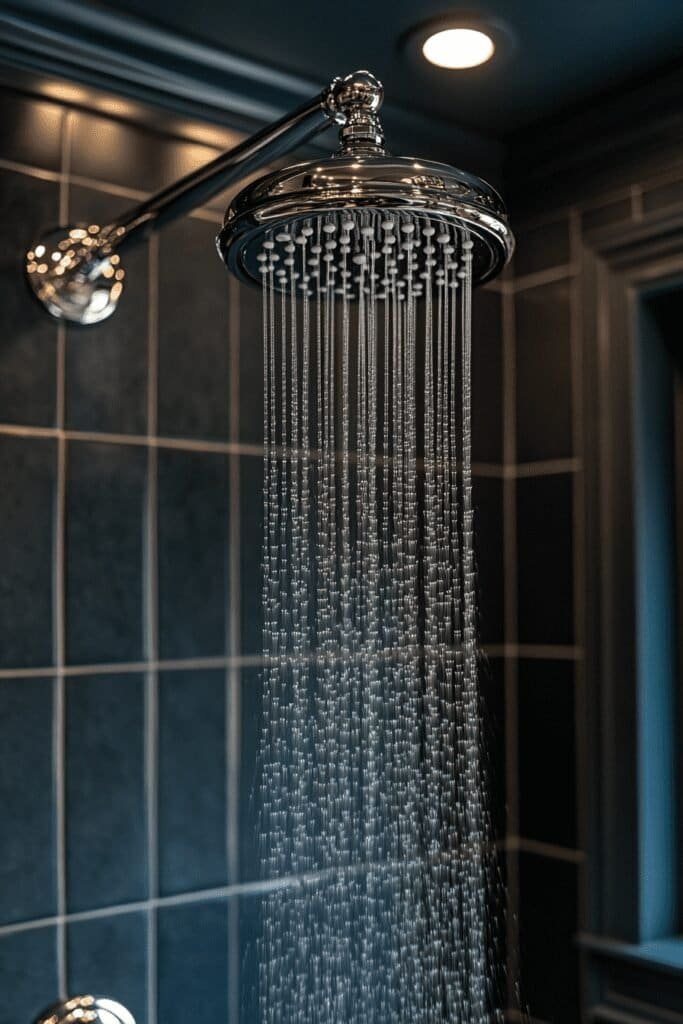

5. Preventing Future Drips: Maintenance Tips
Prevention is always better than repair, especially when it comes to plumbing. Here are some maintenance tips to keep your shower head drip-free:
5.1. Regular Inspections
Check your shower head, valves, and fixtures regularly to catch any signs of wear before they become bigger issues.
5.2. Manage Water Pressure
If you live in an area with high water pressure, consider installing a pressure-regulating valve to prevent leaks and drips.
5.3. Use High-Quality Fixtures
When upgrading or remodeling your bathroom, invest in high-quality fixtures that are designed to last. A good shower head will be less prone to leaks and provide a better overall experience.
6. Dripping Shower Heads and Bathroom Remodels
If you’re planning a bathroom remodel, addressing a dripping shower head should be one of the first things on your list. You don’t want to spend time and money creating your dream walk-in shower, only to have a persistent drip ruin the aesthetics and cause long-term damage to the tiles and grout. Before you start any remodel, fix leaks to avoid complications down the road.
7. Environmental Impact of a Dripping Shower Head
Beyond the inconvenience and potential damage to your bathroom, a dripping shower head has significant environmental consequences. Water is one of our most precious resources, and a slow, constant drip can waste hundreds of gallons each year. This adds unnecessary strain to local water supplies, especially in areas prone to drought.
A leaking shower head can also increase your carbon footprint. The energy used to treat, transport, and heat water is substantial, and every gallon of water wasted contributes to energy consumption. Fixing a small leak not only saves water but also helps reduce energy use, making your home more environmentally friendly.
If you’re planning a bathroom remodel, now is the perfect time to invest in water-efficient fixtures. Many modern shower heads are designed with eco-friendly features, such as low-flow settings, which reduce water consumption without sacrificing water pressure. This makes your bathroom both sustainable and cost-effective in the long run.
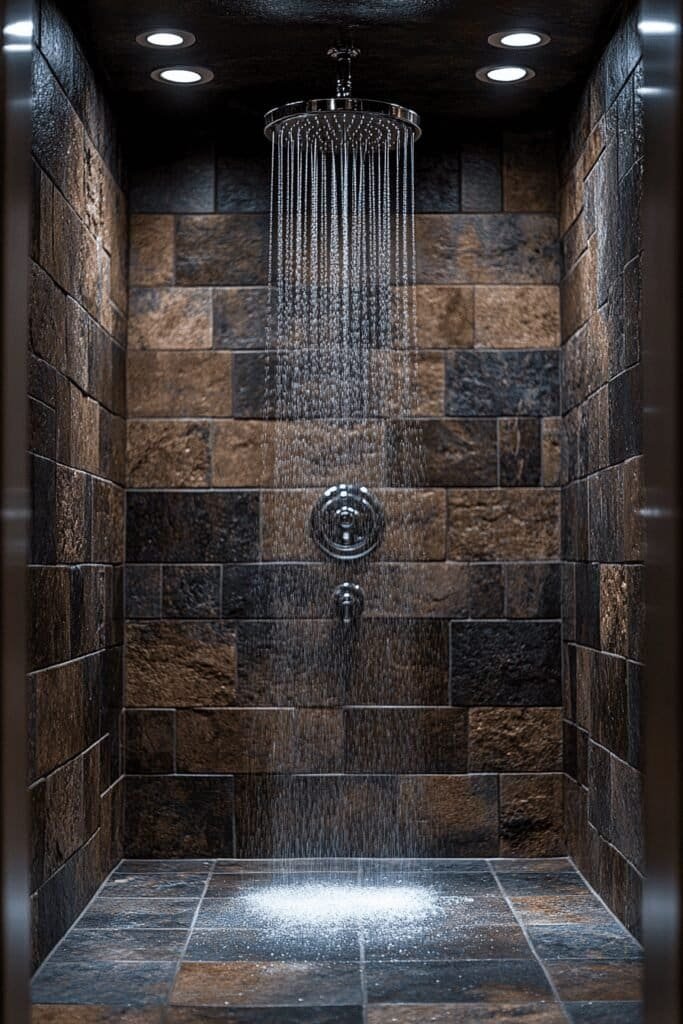

8. Choosing the Right Shower Head for a Bathroom Remodel
When selecting a shower head for your bathroom remodel, it’s essential to think about both style and function. A dripping shower head can be a sign that your old fixtures need an upgrade, and there are plenty of options available today that offer both aesthetic appeal and practical benefits.
8.1. Water-Efficient Options
If sustainability is a priority, look for WaterSense-labeled shower heads. These models are designed to use at least 20% less water than standard shower heads while still providing a satisfying shower experience. You’ll not only conserve water but also lower your utility bills.
8.2. Durable Materials
Opt for shower heads made from durable materials like brass or stainless steel. These materials are more resistant to wear and tear, which means they’re less likely to develop leaks over time. Quality materials will help ensure your shower stays drip-free for years to come.
8.3. Style and Design
Incorporating the right shower head into your remodel, especially if you’re designing a walk-in shower, can elevate the look of the entire bathroom. Whether you choose a rainfall shower head for a spa-like experience or a sleek handheld option for flexibility, your shower head should complement the overall design while providing long-term functionality.
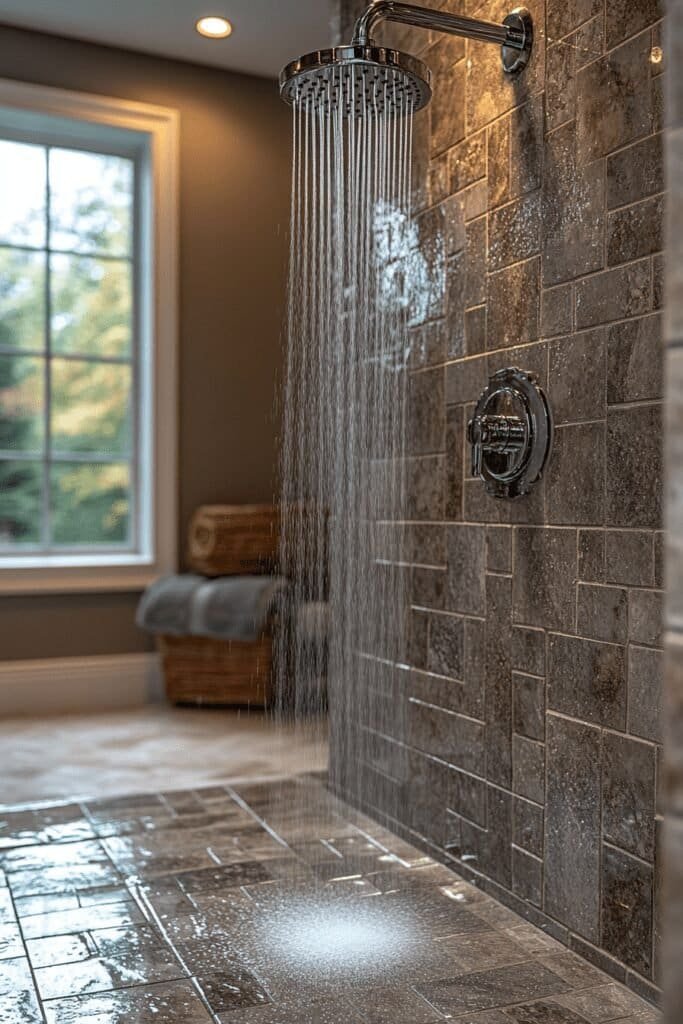

Conclusion
A dripping shower head can be more than just a minor inconvenience—it can waste water, damage your bathroom, and increase your utility bills. Fortunately, by identifying the common causes like worn-out washers, mineral build-up, or high water pressure, you can quickly fix the issue and prevent further problems. Whether you’re looking for a DIY solution or deciding when to call in a professional, addressing the issue promptly is key to maintaining a functional and beautiful bathroom.
If you’re planning a bathroom remodel, especially one with a luxurious walk-in shower, now is the time to ensure all your fixtures, including the shower head, are in top shape. Choose water-efficient, durable, and stylish fixtures to prevent leaks and enhance your bathroom for years to come.
By taking these steps, you’ll not only stop the drip but also improve your shower experience while contributing to a more sustainable home.
Disclaimer: As an Amazon Associate, I earn from qualifying purchases. This means that if you click on certain links on this site and make a purchase, I may receive a small commission at no additional cost to you.
